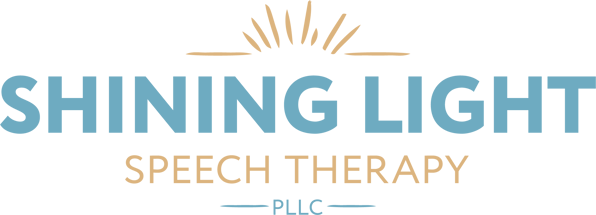NLA and AAC
5/15/20242 min read


Augmentative and alternative communication (AAC) is any form of communication that is not speaking. Typically, AAC is used when an individual is unable to effectively communicate with spoken language, such as children with autism spectrum disorder, selective mutism, or apraxia of speech. AAC can be no-tech, such as using gestures, low-tech, such as pointing to pictures, or high-tech, such as using a speech-generating app on a tablet. Children who use AAC need to learn both the language skills to communicate and how to use the AAC method.
Learning language and AAC is where natural language acquisition comes in. Children learn both skills through seeing and hearing adult models without expectation of communication. When a baby is born, the baby spends an entire year seeing and listening to spoken language without expectation to communicate before saying their first word. Children who are not speaking need hundreds of models of a communication partner using their AAC before they are able to use it themselves. We can’t expect a child to use AAC that they haven’t seen anyone else use. Communication partners need to model language via AAC throughout the day. It could be selecting “like,” while saying, “I think you like that” or selecting “go” while saying, “Ready, set, go!” For gestalt language processors, phrases can be programmed onto a speech generating device that can become new gestalts for the child. These are also modeled in natural contexts throughout the day without expectation for communication. Children will use AAC when they are ready.
Another important principle of AAC is to accept all forms of communication. People are always using a variety of methods to communicate, including spoken language, text message, email, facial expression, and gestures. When a child reaches for a cookie and says “uh!,” you know that he wants a cookie. He has communicated through a gesture and verbalization that he wants a cookie. In order to teach the child language, we still want to model “I want a cookie please” while selecting “want” via AAC or “Can I have a cookie?” while selecting “can” via AAC. We should then either tell the child “not right now” or give the child the cookie if that is acceptable.
Finally, we want to model communication for a variety of purposes. We communicate to socialize with family and friends, protest that we don’t like or want something, share stories or information, comment about our surroundings, and a small part of our day may be making requests. Often, well-meaning professionals get stuck on requesting. AAC gets used only during meal and snack times in order to request what she wants to eat. The problem with this is that the child is only able to communicate a few times per day, and she isn’t able to communicate for other purposes or during play. Play is such an important part of child development. It’s also motivating, fun, and a great time to communicate. Play is when the best learning happens!
